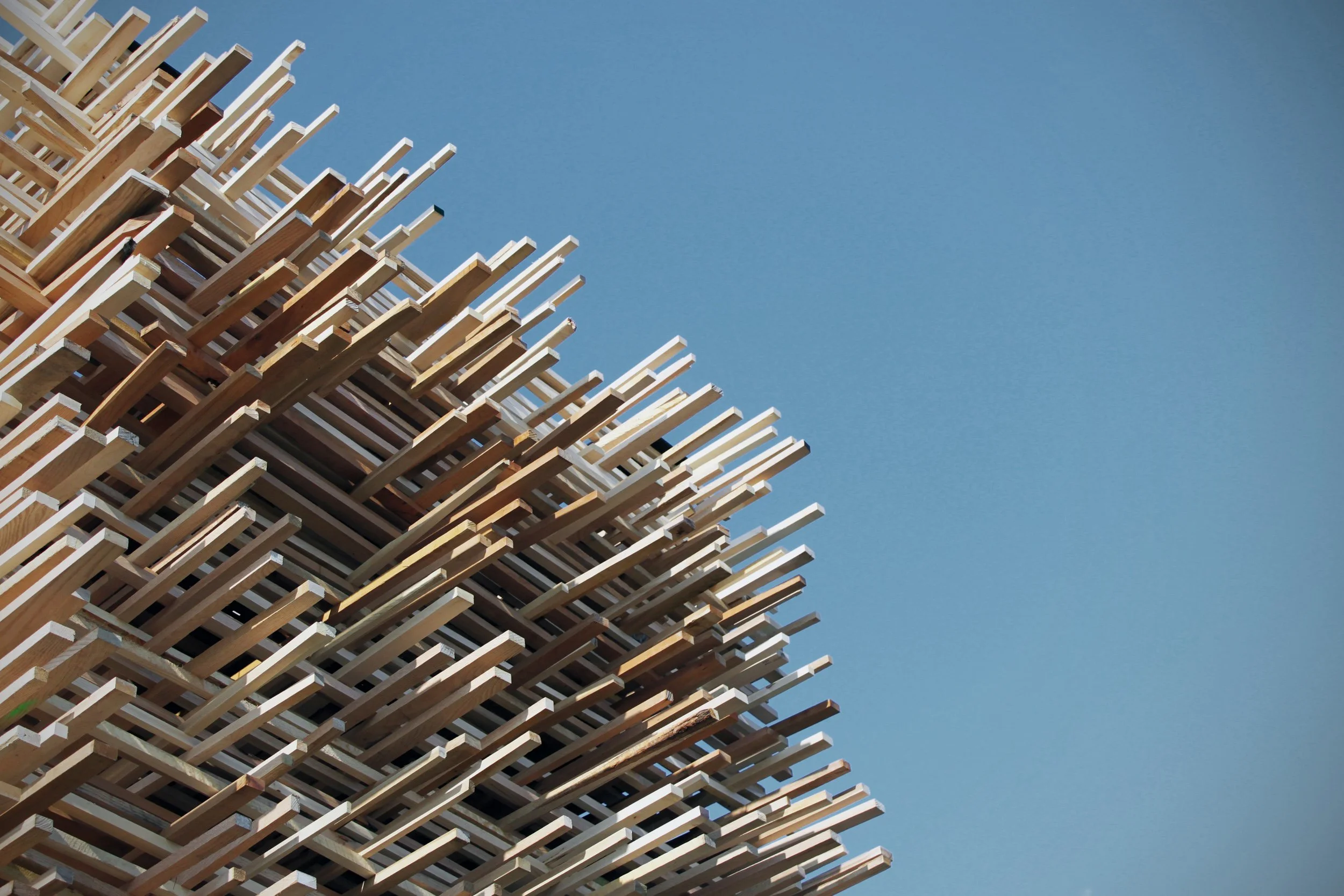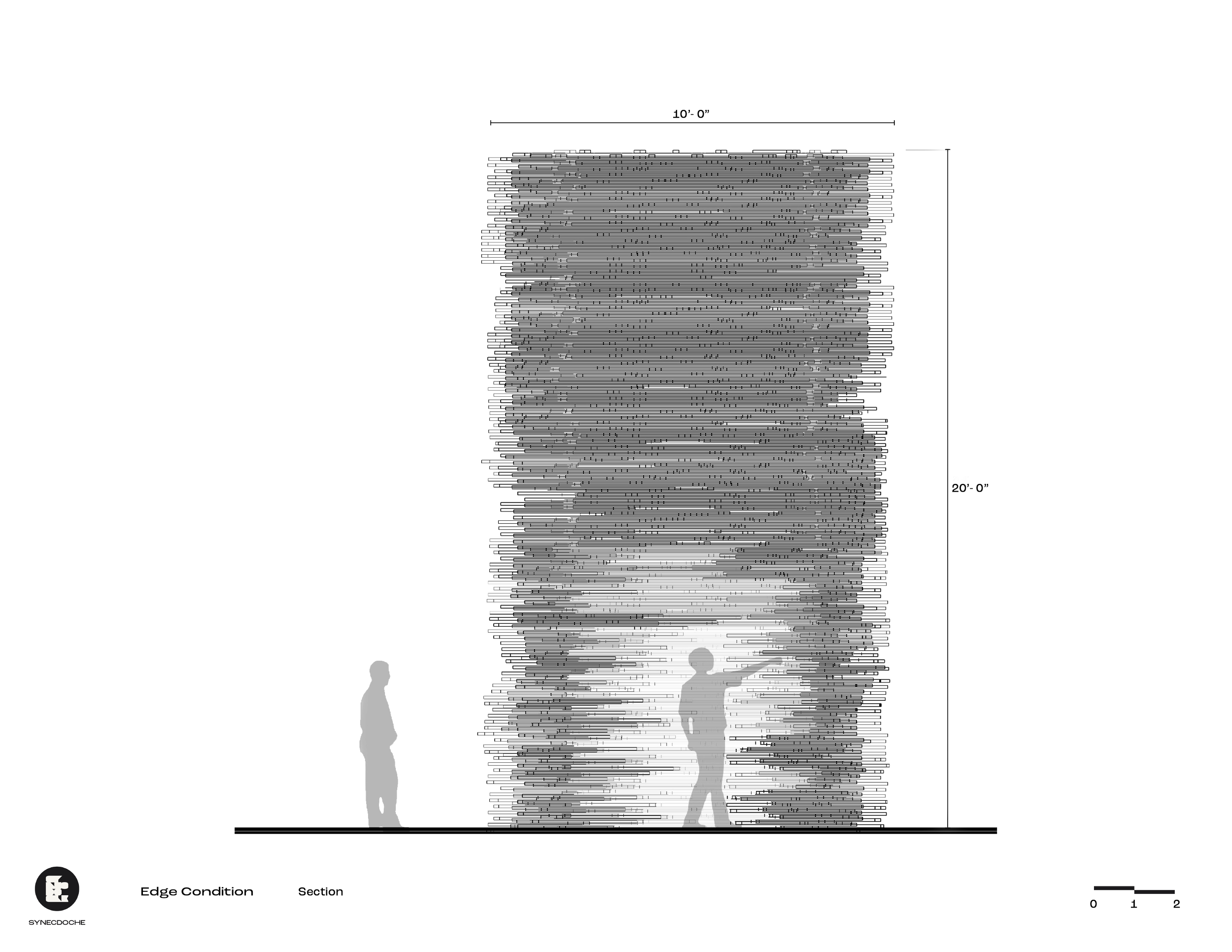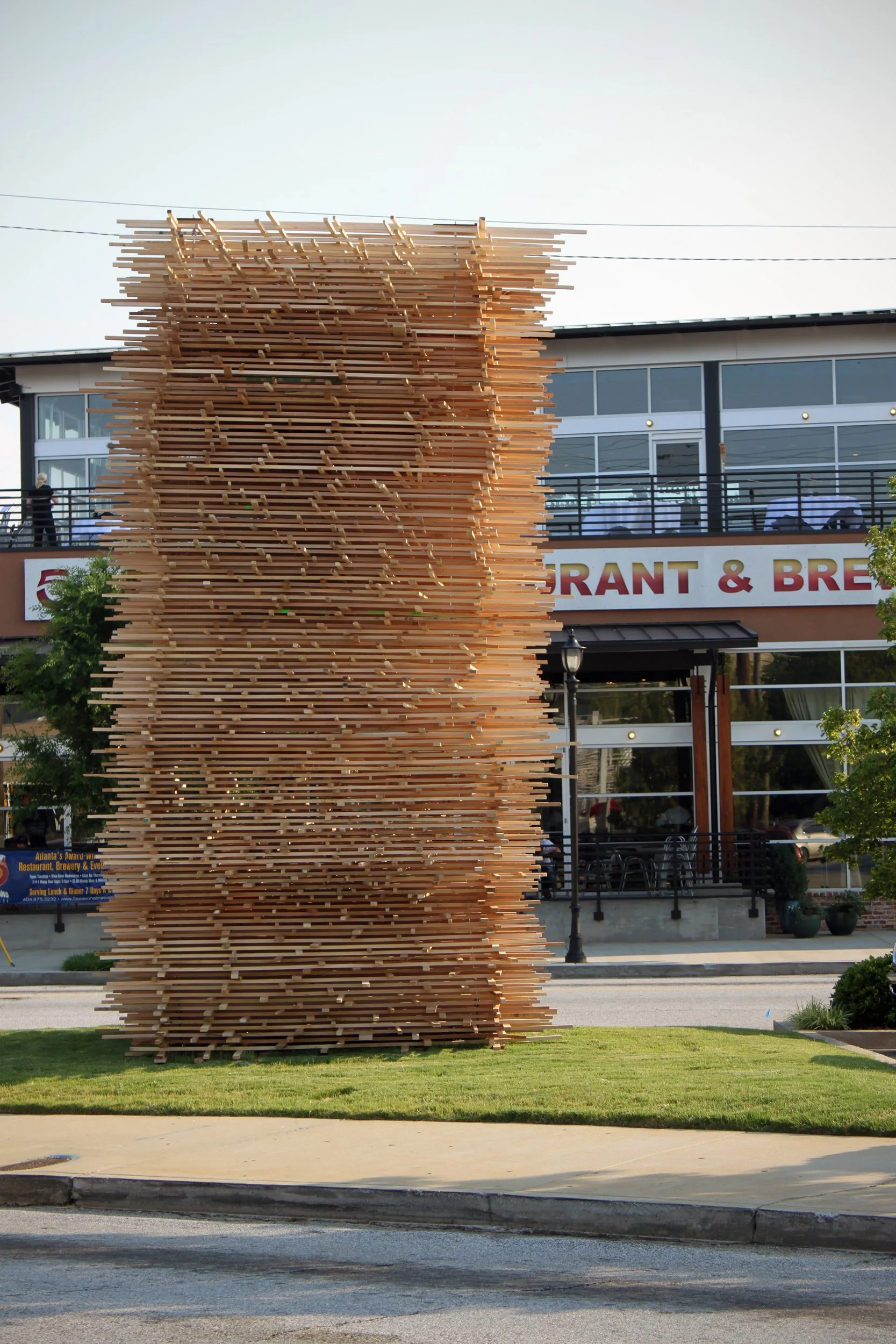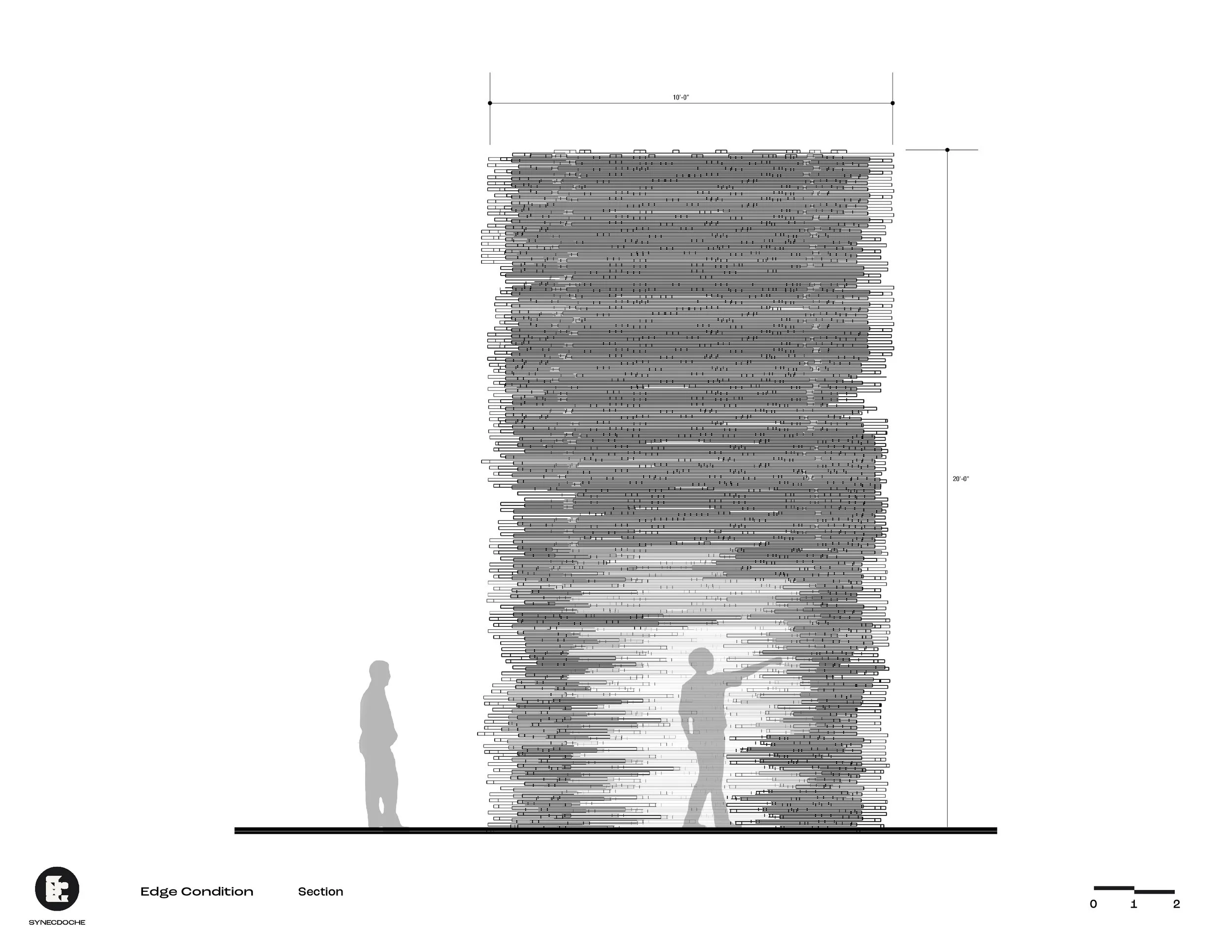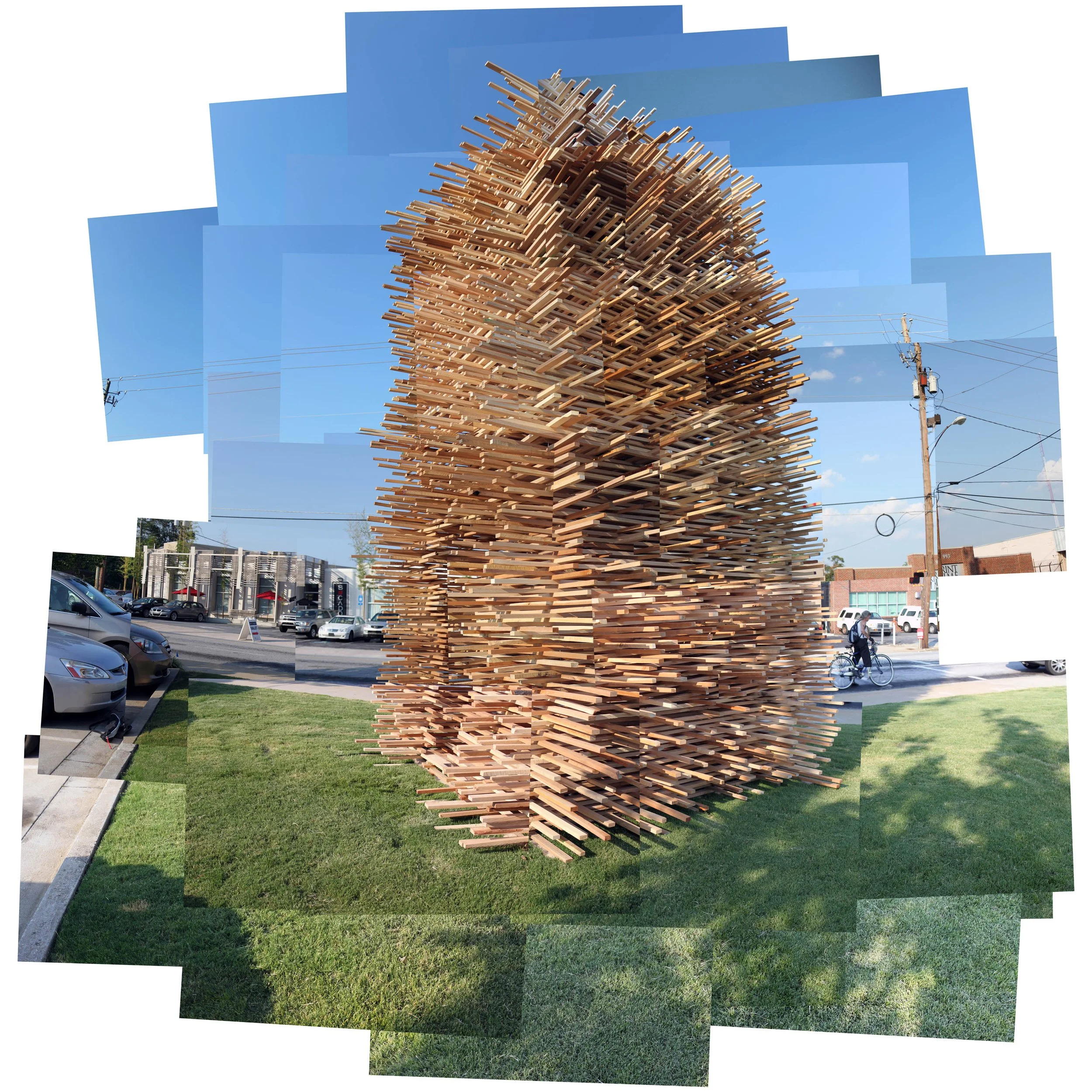EDGE CONDITION
As a practice of temporality, Edge Condition challenges the material, assembly, process, and effect of public space.
Sponsored by the Young Architects Forum of Atlanta and Modern Atlanta!, Synecdoche designed and constructed Edge Condition, a public installation that presents architecture at a different physical and temporal scale. A short existence of the experience replaces the density of architecture as a permanent object with the ephemeral sensitivity of a condition in time. The installation has become a means of participation by public and practice to work through ideas in iteration. Installations by nature has a plasticity, one which can transition and adapt.
Interrogating material as a device for design, wood edges were discovered as a standardized element which could aggregate to a series of constructions. While variable in length and width the wood edges are consistently one inch thick from the milling process. As the lumber mill planes and trims wood boards for inventory, the wood edges as off cuts become a residual material in the process. Edge Condition finds a way to extract the balance from this process to utilize its capacity in the practice of an installation.
The conclusion of the installation also means the conclusion of the wood edges life, but rather than being disposed, they are re-inserted to the milling process to be churned to wood chips as a new condition and anticipated capacity for the material. By operating on the edge of definitive material, neither board nor wood chip, the wood edge becomes the temporal object between two phases.
The pavilion displays the capacity to be an edge condition of construction.
The methodical mode of stacking and maneuvering the edges is in itself on the edge of a mode of assembly. The variable of stacking techniques allow for light to move into the pavilion only through the spaces between the edges transforming the edge condition into an ephemeral effect.
While Edge Condition existed for a 8 day period, the expectation is that the texturized assemblage would transform over time as its exposure continued. In the short term of the installation the wood edges found themselves faded where exposed to sunlight and protected where two edges overlapped. Finite particles move uninterrupted through the space while larger accumulations of snow and leaves began to seal and block the atmosphere of light and wind into the interior condition. Searching for the unexpected and anticipating surprising new conditions in the earnestness of installations, it interrogates its result rather than its expectation, proving the value of continuing to work on the edge.

